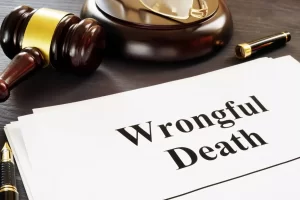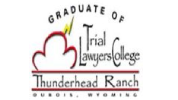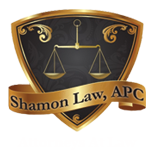Wrongful death cases are amongst the most emotionally charged. No money can bring back a loved one, but a wrongful death award or settlement provides financial security and solace for the family. Many deaths are considered wrongful in the State of California. If a person or entity acts in a negligent, reckless, or intentional way that kills your loved one, you may have a case for wrongful death.
What is Considered a Wrongful Death?
 In California, wrongful death is caused by the negligence, recklessness, or intentional act of a person with a legal duty of care. For a wrongful death claim to succeed, the plaintiff must prove that the defendant(s) had a duty of care and caused the death by breaching it.
In California, wrongful death is caused by the negligence, recklessness, or intentional act of a person with a legal duty of care. For a wrongful death claim to succeed, the plaintiff must prove that the defendant(s) had a duty of care and caused the death by breaching it.
For instance, a motorist who drives recklessly, a company that sells a defective product, or a city that allows traffic onto a crumbling bridge can all face a wrongful death claim if these circumstances kill someone.
Not all deaths caused by an auto accident, hazardous product, or bridge collapse are wrongful. The death must have resulted from negligence, recklessness, or intentional acts that violate a legally valid duty of care.
For instance, an auto accident may cause death, but there is no wrongful death case against any other motorist if they fulfilled the duty of care required by drivers. This might be the case if the cause of the accident had nothing to do with the other driver’s death but instead resulted from the decedent’s action or an act of nature.
In the case of a product, companies have no liability for wrongful death unless the product caused a fatality through malfunction. Guns provide an example. Firearms manufacturers have no liability when their products are used illegally. They are not intended to be used against innocent people. However, if a gun blows up in the hand of its owner while target shooting, killing him, the manufacturer is responsible for the death because if sold, a product that killed someone while being used as intended.
Likewise, a city may have blocked off a pedestrian bridge after it failed inspection. Instead, it has exercised its duty of care. Suppose a person decides to ignore the obvious warning, climbs a barricade to access the closed bridge, and dies when it collapses. In that case, the city arguably has no responsibility for the death.
It Costs Nothing To Hire Us.
When We Win, We Pay You.
Why Choose Shamon Law as Your Personal Injury & Accident Lawyers?
An injury can leave you with mounting medical expenses, lost income, and an inability to participate in your life fully. No accident victim should be left to fend for themselves.
Shamon law understands how important these cases are for our clients. Our experience includes going up against the big insurance companies and winning. We use our expertise to develop powerful cases, negotiate the best possible settlements, and win cases at trial.
No Fees Until You Win
With no fees until you win, you won’t owe us a dime unless we win your case.
Multi Millions in Recoveries
Multi millions in recoveries for our clients. Recognized as Top 40 Law Firm by The National Trial Lawyers
Thousands Of Happy Clients
Our company has worked with thousand of happy clients over the years and we are proud to have helped them achieve their goals.
We Are Undefeated
We are undefeated because we never give up. We never give up because we believe in ourselves. We believe in ourselves because we know that we are capable of anything. We are capable of anything because we are undefeated.
Do I Need a Lawyer for a Wrongful Death Claim in San Diego?
Wrongful death claims require legal expertise to file and litigate properly and optimally. Insurance companies are usually responsible for payment. Their business model rests on reducing claims payouts. Wrongful death claims generally have a high value, so insurers invest in hefty legal fees to reduce their exposure. Hiring a wrongful death lawyer combats their attempts to minimize or deny the claim.
A wrongful death attorney helps throughout the process, including with these key aspects of a case:
Investigation
All claims require a thorough investigation to gather the evidence needed to win in court. However, showing a death was tragic is insufficient. The plaintiff must prove a duty of care that was breached and that the breach caused the death.
Some accident investigations yield quick results. For instance, police reports and witness statements may be enough to prove that a driver was negligent in causing a fatal accident. On the other hand, some claims require extensive investigations, including expert witnesses and the uncovering of physical evidence.
For example, a cluster of cancer fatalities may have occurred in a town. An investigation of medical records, witness accounts, and samples may indicate that drinking water contained a carcinogen. But how did it get there, and who is responsible? A continued inquiry may reveal illegal waste dumped in a river is the culprit and trace this waste to a nearby factory.
Without professional investigation, many wrongful deaths are never proven.
Filing a Lawsuit
Lawsuits need evidence and legal arguments based on law and precedent. For example, your wrongful death litigation team builds a case that the defense cannot convince a judge to dismiss.
Negotiations
Insurance companies use a variety of strategies to negotiate for a settlement that comes nowhere near compensating the decedent’s family. Often, insurance adjusters pretend to be helpful while trying to convince families to accept low compensation.
Wrongful death attorneys understand these tactics and what a jury will award in the case. As a result, they rebuff these attempts to shortchange their clients and require insurance companies to negotiate in good faith.
Wrongful death case negotiations may go through several stages. First, as litigation progresses, the evidence in these claims tends to grow stronger, forcing insurers to raise their offers. Wrongful death lawyers develop the evidence that is most damning to achieve the best possible settlement.
The judge may order a settlement conference when the case fails to settle and a trial date draws near. The judge chairs the meeting and attempts to broker a settlement. These conferences provide an excellent venue for the plaintiff’s attorneys to force a resistant defense to come to terms.
Trials
Not all negotiations end in an agreement. Your legal team will take the case to trial if the defense remains unreasonable. Often, the threat of going to trial convinces the defense to settle. However, when they face an expensive process where the odds are against them, they are willing to settle to mitigate their losses.
Appeals
Appeals can take as long or longer than the rest of the process. For example, when the defense appeals to a wrongful death verdict, they rely on legal procedure and precedence arguments. These more academic arguments may persuade an appeals panel unless you have a knowledgeable legal team to show they lack merit.
Shamon Law is Recognized by





99% Client Win Rate
Contact Us For Free Consultation
Common Types of Wrongful Death
Wrongful death claims arise from a wide variety of circumstances. They can result from accidents or intentional actions; they can be against individuals or organizations; they can cause immediate death or long-term fatal conditions.
The most common types of wrongful death include the following:
- Vehicle accidents
- Aviation accidents
- Boating accidents
- Workplace accidents
- Defective products
- Contamination
- Carcinogen exposure
- Medical malpractice
What kind of Compensation does a Person Receive Following a Wrongful Death Case?
Wrongful death claims exist to compensate families and loved ones. Though they cannot bring back the deceased, they can provide financial compensation for economic and non-economic losses.
Economic Damages
Economic damages are easier to prove because expenses and lost income come with documentary evidence. For instance, funeral costs come with a bill, and lost wages can be calculated.
Common economic damages include the following:
Medical Expenses
The family may be responsible for medical bills accrued in the attempt to save the decedent. These are recoverable.
Funeral Costs
Reasonable funeral costs are typically awarded.
Future Income
Future income may be wages, salaries, benefits, and business income.
Non-Economic Damages
Noneconomic damages consist of intangibles, such as the pain and suffering of the family. However, they require more effort to prove and have a subjective component, though case law provides some guidance.
Pain and Suffering
Pain and suffering in this context are the grief and loss experienced by family members rather than the deceased. A deceased person’s pain and suffering are compensable in a survival action.
Loss of Companionship
This relates to the noneconomic costs of losing a parent, grandparent, child, spouse, or other relatives.
Loss of Guidance and Mentoring
Children often receive compensation for the loss of guidance and mentoring when their parent is lost in wrongful death.
Loss of Consortium
This refers to the loss of an intimate relationship experienced by the spouse. The amount of damages awarded in each case differs. For instance, the lost income for a person close to retirement and one at prime career age may differ even if the income level is similar.
When calculating financial losses, factors considered include:
- Age and life expectancy
- Income level
- The decedent’s general health
- Age and living arrangements of impacted children
- The number of people financially dependent on the decedent
- The decedent’s education or special training
- The decedent’s fringe benefits, such as health insurance
Survivor Actions
Survivor actions provide a different set of damage awards. This action is filed on behalf of the decedent by the estate executor. These actions seek compensation that the decedent would have received if they had survived. For example, if the victim spent several days in the hospital undergoing painful treatments before passing away, the estate can receive pain and suffering damages on behalf of the decedent.
Contact a Top-Rated San Diego Wrongful Death Lawyer Today
You have rights when your loved one dies due to another’s mistake or intentional action. Contact a San Diego wrongful death lawyer today.
San Diego Wrongful Death Lawyer Near Me
San Diego Wrongful Death FAQs
California personal injury and wrongful death laws are based on pure comparative negligence. Under pure comparative negligence, courts assign the plaintiff(s) and defendant(s) a percentage of negligence based on their findings at trial.
In a clear-cut case, the court may find the plaintiff 0% at fault and the defendant 100%. On the other hand, it could find the plaintiff partly at fault. Furthermore, comparative negligence allows a plaintiff to receive an award even if the court rules them to be the majority at fault.
For instance, imagine the plaintiff’s loved one was killed in an auto accident. For example, if the accident resulted from a drunk driver swerving in front of a carefully proceeding motorist and killing them, a court is likely to find the plaintiff 0% at fault and the drunk driver 100% at fault.
However, the case grows murkier if the plaintiff also drove incautiously or broke the law. For example, the plaintiff may have been travelling far above the speed limit, and the defense may be able to demonstrate that the accident would have been avoided if the decedent had been driving prudently. In addition, the defense may develop evidence that the decedent was intoxicated and swerving due to alcohol use.
In such a case, a jury will likely conclude that the decedent contributed a significant portion of the negligence that caused the accident.. For example, it may find the plaintiff 40% at fault, 50%, 60%, or some other number. Regardless, the plaintiff(s) receive a wrongful death award, provided the defendant is at least 1% at fault.
Comparative negligence can dramatically impact the amount of an award. For example, a plaintiff’s award is reduced by the percentage of liability assigned to the decedent under pure comparative negligence.
For example, a family may submit $1 million in damages for a decedent killed in the above example. Should the jury find the victim 40% at fault, the court reduces the award to $600,000. For 50% at fault, the award is $500,000, and for 60%, $400,000. Theoretically, a jury could find the decedent 99% at fault, reducing the award to $10,000.
These calculations take on new meaning when the parties are suing each other. In the above example, it’s possible both parties were killed, and each family blames the other driver. At trial, a jury would have the job of determining liability based on comparative negligence.
Since California is a pure comparative negligence state, both families can receive an award, typically funded by each defendant’s insurance company, with each insurer paying the amount specified by the jury verdict.
For instance, if the jury splits the liability 50/50, each insurer contributes $500,000 to the award, and each family receives $500,000 in gross proceeds.
To win a wrongful death case, the plaintiff must prove that the defendant’s negligent, reckless, or intentional conduct caused their loved one’s death. This requires evidence that the defendant committed wrongful conduct that resulted in the decedent’s demise. For example, witness statements that the defendant’s vehicle crossed the center line and struck the decedent’s vehicle head-on demonstrate wrongful conduct.
The statute of limitations is two years from the date of the death or two years from when the plaintiff(s) discovered that the death was wrongful.
Once filed, a wrongful death lawsuit generally takes several years to resolve. Because damages are generally large, negotiations take longer. The plaintiff’s legal team often must complete the discovery process, including depositions, to develop sufficient evidence to prove liability and damages. A trial adds several years to the process because of appeals.
Wrongful death claims are usually worth large sums. The deceased person is gone forever, subjecting the survivors to tremendous grief and loss. Juries tend to sympathize with the family and award generous compensation.
In addition, survivors have entitlements to the decedent’s projected future wages, fringe benefits, and other sources of income. Depending on the person’s earning power and age, these damages can easily total millions.
The amount received depends on the circumstances of the accident. Because California is a pure comparative negligence state, award amounts vary considerably based on a jury’s fault finding. If the panel concludes the decedent contributed to the fatal accident, the award is reduced by the proportionate share.
For example, if a family demonstrates $2 million in damages and the jury finds the defendant(s) 100% at fault, they receive the entire amount. If the decedent were 50% at fault, the total would be reduced to $1 million. A jury could also find the decedent 99% liable, in which case the family collects $20,000 minus legal expenses.
A wrongful death lawyer is a personal injury attorney with experience representing the families of the deceased. A wrongful death lawyer is always a personal injury attorney, but not all personal injury attorneys practice wrongful death.
San Diego wrongful death attorneys take cases on contingency. This ensures that families never pay out of pocket or owe money if they never collect from the defendant(s). Instead, the fees are paid out of a share of the award or settlement.
